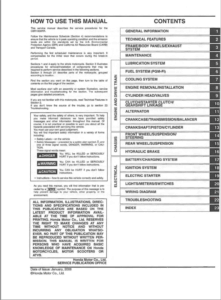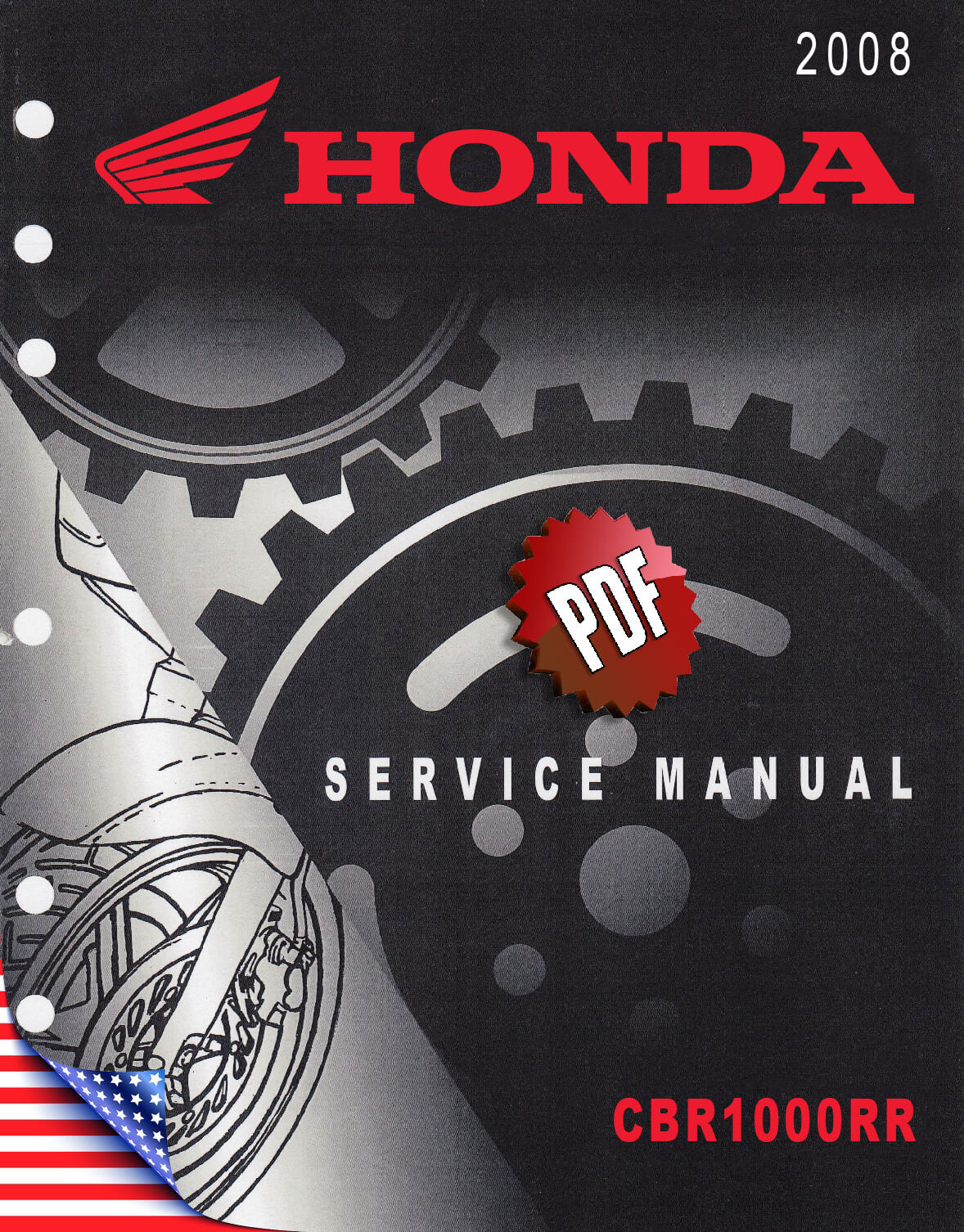Complete PDF version of the Service Manual for the Honda CBR1000RR 9th gen. A MUST for every Fireblade owner.
Download: Immediately after payment!
OEM Original factory workshop manual.
Models covered by this manual: 2008 to 2010
Number of pages: 554 pages
Table of contents:

This PDF repair manual can be downloaded right after the payment process in complete, on the device of your choice. You will also receive the download link by email along with your receipt.
We do not offer printed manuals, for the following reasons:
- it is more eco-friendly to use a digital version
- your manual never gets dirty or greasy
- you can always choose to print the specific page(s) you need to work on your bike
- you receive your manual immediately after payment
- it is searchable

Honda CBR1000RR
The Honda CBR1000RR is a 999 cc (61.0 cu in) liquid-cooled inline four-cylinder super-bike (also known as “Fireblade“) released by Honda in 2003 as the 7th iteration of the CBR series of motorbikes that began with the CBR900RR in 1990.
The Honda CBR1000RR was created by the same team that was responsible for the MotoGP series. Many of the innovative technology featured in the Honda CBR600RR, a direct descendant of the RC211V, were carried over to the new CBR1000RR, including a longer swing-arm, Unit Pro-Link rear suspension, and Dual Stage Fuel Injection System (DSFI).
2008 redesign
The CBR1000RR, an all-new ninth-generation RR (SC59), was unveiled on September 28, 2007 at the Paris International Motorcycle Show for the 2008 model year. The CBR1000RR was powered by a brand new 999cc (61.0 cu in) inline-four engine with a redline of 13,000 rpm. It had titanium valves and a larger bore with a correspondingly shorter stroke. The engine included an entirely redesigned cylinder block, head arrangement, and crankcase, as well as lighter pistons. A new ECU had two different updated maps that caused the fuel and air mixture to be pushed tight by the compression ratio of 12.3:1. Ram air was routed to an expanded air box through two redesigned front scoops positioned beneath the headlights.
Honda made a concerted effort to decrease and concentrate total weight. Honda stated that a lighter, thinner die-cast frame was constructed utilizing a novel process that allowed for exceptionally thin wall construction and just four castings to be welded together. Almost every component of the new bike, including the side-stand, front brake hoses, brake rotors, batteries, and wheels, has been re-engineered to be lighter.
A slipper clutch with a center-cam-assist system was installed to increase deceleration stability. The Honda Electronic Steering Damper was also updated. The exhaust system, which was no longer a center-up under-seat design, was another notable alteration. The redesigned exhaust was designed with a side-slung shape to promote mass centralization and compactness while resembling a MotoGP-style.
Source: Wikipedia

